
This teacher's guide for The Misfits by James Howe containes discussion questions, activities, and research assignments.
- Subject:
- English Language Arts
- Material Type:
- Activity/Lab
- Provider:
- Simon and Schuster
- Date Added:
- 04/13/2017

This teacher's guide for The Misfits by James Howe containes discussion questions, activities, and research assignments.

A teachers guide for My Sisters' Voices: Teenage Girls of Color Speak Out by Iris Jacob including questions for deeper comprehension, exercises for the class, and suggestions for further reading.

A young Bedouin girl has earned the nickname Nadia the Willful because of her quick temper. Her brother, Hamed, is the only one who can tame her temper. In this CCSS lesson, students will explore this story through text dependent questions, academic vocabulary, and writing assignments; writing samples included.

Julia Alvarez recalls her family's early years as Dominican immigrants in America, and describes her reactions to the mispronunciation of her family members’ names. Eager to fit into school, Alvarez allows herself to be called American names and nicknames” although proud of her heritage and native language, young Alvarez struggles to fit in. In this CCSS lesson, students will explore this story through text dependent questions, academic vocabulary, and writing assignments.

This lesson takes advantage of that interest by asking students to create a soundtrack for a novel that they have read. Students begin by analyzing how specific songs might fit with a familiar story. Students then create their own soundtracks for the movie version of a novel they have read. They select songs that match the text and fit specific events in the story. Finally, students share their projects with the class and assess their work using a rubric. Examples in this lesson focus on The Beast by Walter Dean Myers, but any piece of literature can be used as the basis of students' soundtracks.

Use literacy skills to make connections among those in your classroom with this lesson that focuses on building classroom community by sharing favorite texts with one another. In this lesson, the class explores environmental print then focuses specifically on a teacher-created display on a favorite book. After exploring the teacher’s display, students write about their own favorite book, genre, or author. Students then select one of several options for making a display of their favorite book to share with the class. After creating their own presentations, students share them with the class and complete peer- or self-assessments.
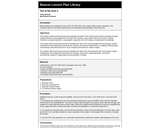
In this lesson, students read the novel "Out of the Dust" and create charts, answer questions, and take an assessment to demonstrate their understanding.
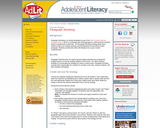
The Paragraph Shrinking strategy allows each student to take turns reading, pausing, and summarizing the main points of each paragraph. Students provide each other with feedback as a way to monitor comprehension.

In this lesson, students will engage in a peer-critique of their literary analysis and then, after learn about the use of pronouns, incorporate the feedback/lesson into their revisions.

Students will practice visualizing and understanding that visualization is an important comprehension strategy. Students will share their visualization of the story through original artwork.

In this lesson, students refine and revise their supporting evidence and make arguments using the Taking Sides protocol.

This lesson is one part of a four lesson unit on Shakespeare Stealer. This theater and language arts lesson offers intellectual, creative and interpretive opportunities. Students will analyze and compare the puns and word play in selected scenes from the plays, The Shakespeare Stealer by Gary L. Blackwood and Twelfth Night by William Shakespeare. Students will then read scenes from each play in groups and interpret their meanings to prepare for a performance of the scene. The lesson culminates with students writing a short essay explaining how the playwrights used puns and word play to give their characters wit.

Behind many of the apparently simple stories of Robert Frost's poems are unexpected questions and mysteries. In this lesson, students analyze what speakers include or omit from their narrative accounts, make inferences about speakers' motivations, and find evidence for their inferences in the words of the poem.

Poets achieve popular acclaim only when they express clear and widely shared emotions with a forceful, distinctive, and memorable voice. But what is meant by voice in poetry, and what qualities have made the voice of Langston Hughes a favorite for so many people?
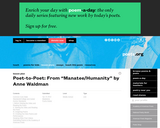
This poetry lesson uses "Manatee/Humanity" to help students develop skills of noticing (seeing, hearing, and feeling) in relationship to poetry.
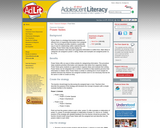
Power Notes is a strategy that teaches students an efficient form of organizing information from assigned text. This technique provides students a systematic way to look for relationships within material they are reading. Power Notes help visually display the differences between main ideas and supportive information in outline form. Main ideas or categories are assigned a power 1 rating. Details and examples are assigned power 2s, 3s, or 4s.
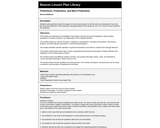
In this lesson, students pose questions about the subject of a short story based on the title and cover illustration, then read the story and determine if their questions actually pertained to the story line, and, if so, how the story answered the questions.

In this lesson, students will write a literary argument essay about Bud, Not Buddy. The task is labeled a literary argument because students argue whether Bud uses his rules to survive or thrive, and use evidence from the novel to support their position.

in this lesson, students will closely examine a prompt and a model essay, ensuring that they have a clear understanding/purpose for the work ahead.
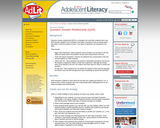
Question-Answer relationship (QAR) is a strategy to be used after students have read. QAR teaches students how to decipher what types of questions they are being asked and where to find the answers to them. Four types of questions are examined in the QAR.